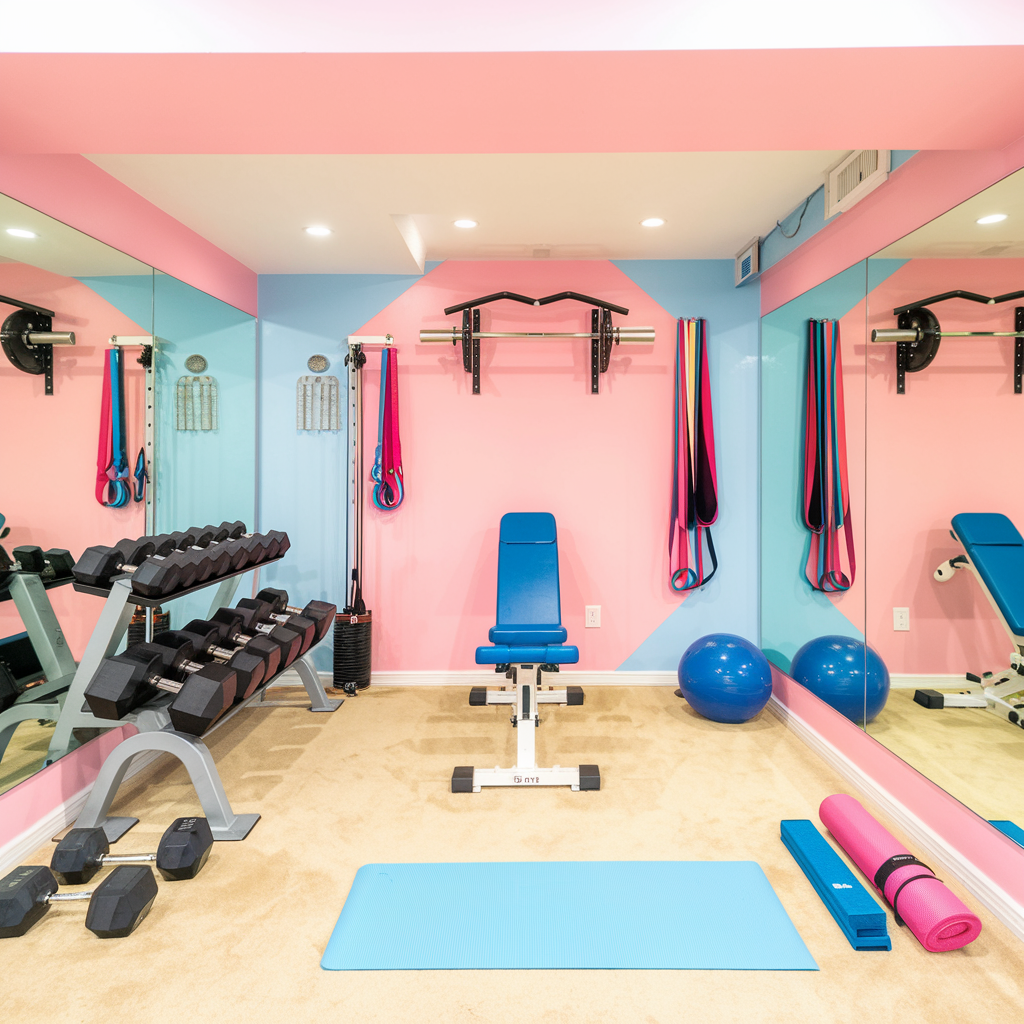How to Stop Losing and Gaining the Same 10 Pounds
For years, I was trapped in what felt like an endless loop. I’d start a new diet—full of excitement and motivation—lose 10 pounds quickly, only to find myself back at square one months later. Each time, I’d blame myself: “Why can’t I stick to anything? Why do I always end up right back where I started?”
It wasn’t until I stepped back and looked at the bigger picture that I realized the problem wasn’t me—it was the approach I was taking. I’d been following restrictive diets that were unsustainable in the long run. If you’re tired of losing and regaining the same 10 pounds, I want you to know you’re not alone. The good news is there is a way out of this cycle.
Why It Feels Like You’re Always Starting Over
Let’s start by acknowledging the frustrations you’ve likely faced:
- You work hard, cut calories, and see progress—only to plateau and feel stuck.
- You feel like your metabolism is “broken” or that your body resists change.
- You’re drained by the constant mental battle with food—swinging between restriction and indulgence.
The truth is, our bodies are designed to adapt to our habits. When we drastically cut calories or over-exercise, our metabolism slows down to preserve energy—a survival mechanism called adaptive thermogenesis. This is why crash diets often backfire. Over time, our bodies become more efficient at operating with less, making it harder to lose weight and easier to regain it when we return to old habits.
The Key to Keeping the Weight Off for Good
The key to breaking the cycle isn’t about finding the perfect diet or spending hours at the gym. It’s about creating sustainable habits that work with your body, not against it. When you focus on fueling your metabolism, balancing your plate, and ditching the all-or-nothing mindset, you’ll find that progress not only becomes more manageable but also long-lasting.
So, what does that look like in practice? It’s not about overhauling your entire lifestyle overnight. Instead, it’s about taking small, intentional steps that create a solid foundation for lasting results. Each step builds on the other, helping you not just lose weight but also maintain your progress for good.
Below, I’ll share seven actionable strategies that have worked for me and countless others. These steps are practical, sustainable, and rooted in real science—because this time, you’re not just losing weight; you’re gaining freedom from the yo-yo dieting cycle. Let’s dive in.
Step 1: Shift Your Mindset
Before we dive into the practical steps, it’s crucial to address your mindset. If you’re stuck in the cycle of yo-yo dieting, chances are you’ve been chasing quick fixes rather than sustainable solutions. Here’s how to change that:
- Ditch the All-or-Nothing Mentality: Progress isn’t about perfection. Missing a workout or indulging in dessert doesn’t mean you’ve failed. It’s about consistency over time.
- Focus on How You Want to Feel: Instead of obsessing over the scale, think about the energy, confidence, and strength you want to gain.
- Set Realistic Goals: Aim for slow, steady progress—0.5 to 1 pound of weight loss per week is sustainable and more likely to stick.
Step 2: Heal Your Metabolism
If you’ve been dieting on and off for years, your metabolism might need a reset. Here’s why healing your metabolism is essential:
- What Happens When You Diet Too Much: Chronic dieting slows your basal metabolic rate (BMR), the calories your body burns at rest. Over time, this can make it harder to lose weight.
- The Importance of Reverse Dieting: Reverse dieting involves gradually increasing your calorie intake to restore your metabolism. By eating more, you give your body the fuel it needs to function optimally, which can actually make fat loss easier down the line.
How to Start Healing Your Metabolism:
- Track Your Current Intake: Spend a week tracking what you eat to establish your baseline calories.
- Increase Calories Slowly: Add 50-100 calories per week until you reach your estimated maintenance calories (calories needed to maintain your current weight).
- Monitor Biofeedback: Pay attention to energy levels, sleep, hunger, and mood as you increase calories. These are signs your body is adjusting positively.
Step 3: Balance Your Plate with PHFF
PHFF stands for Protein, Healthy Fats, and Fiber—a simple framework for creating balanced meals that keep you full and satisfied while stabilizing blood sugar levels. When your meals are balanced, you’re less likely to overeat or experience energy crashes.
Why PHFF Works:
- Protein: Keeps you fuller longer and supports muscle maintenance.
- Healthy Fats: Slows digestion and supports hormone health.
- Fiber: Regulates digestion and keeps blood sugar stable.
How to Build a PHFF Plate:
- Protein: Include a source like chicken, tofu, eggs, or Greek yogurt.
- Healthy Fats: Add avocado, nuts, seeds, or olive oil.
- Fiber: Fill half your plate with vegetables and include a whole-grain or starchy vegetable like quinoa or sweet potato.
Step 4: Get Moving (Without Overdoing It)
Exercise is an important piece of the puzzle, but it’s not the only one. Instead of focusing solely on high-intensity workouts, prioritize these two types of movement:
- Strength Training: Building muscle increases your metabolism because muscle burns more calories than fat. Aim for 2-4 sessions per week.
- NEAT (Non-Exercise Activity Thermogenesis): This includes all the movement you do outside of structured exercise, like walking, fidgeting, or doing housework. Increasing your daily steps can make a big difference.
Simple Ways to Add More Movement:
- Take a 10-minute walk after meals.
- Park farther away when running errands.
- Set a timer to stand up and stretch every hour.
Step 5: Break Free from the Binge-Restrict Cycle
One of the biggest traps in yo-yo dieting is the binge-restrict cycle. You deprive yourself of your favorite foods, then overindulge when your willpower runs out. Breaking this cycle starts with allowing all foods into your diet—without guilt.
Strategies to Break the Cycle:
- Practice Mindful Eating: Slow down and savor each bite. Pay attention to hunger and fullness cues.
- Plan for Treats: Build indulgences into your weekly plan so they don’t feel like “cheating.”
- Change Your Language: Stop labeling foods as “good” or “bad.” Instead, think of them as “more nutritious” or “less nutritious.”
Step 6: Build Sustainable Habits
Lasting weight loss comes from habits that are realistic and sustainable for your lifestyle. Instead of overhauling everything at once, focus on one small change at a time.
Habit-Building Framework:
- Start Small: Choose one habit to focus on, like drinking more water or adding veggies to one meal a day.
- Be Consistent: Practice the habit daily until it feels natural, then add another.
- Track Your Progress: Use a journal or app to celebrate wins and stay motivated.
Step 7: Stop Focusing on the Scale
It’s time to redefine success. The number on the scale is just one measure of progress—it doesn’t reflect improvements in energy, strength, or confidence.
Non-Scale Victories to Celebrate:
- Your clothes fit better.
- You have more energy to play with your kids.
- You’re sleeping better and feeling more rested.
Motivational Interviewing: Reflect on Your Goals
To help you take the next step, ask yourself these questions:
- What’s one small change you could make this week to feel more energized?
- How would it feel to enjoy your favorite foods without guilt?
- What does success look like for you beyond the scale?
You’ve Got This
Breaking free from the cycle of losing and gaining the same 10 pounds is possible, and it starts with letting go of restrictive diets and embracing sustainable habits. Remember, progress isn’t about perfection—it’s about making consistent choices that align with your goals.
If you’re ready to take control of your health for good, I’d love to hear your thoughts or struggles in the comments below. Let’s break this cycle together!

![[10 Pack] Glass Meal Prep Containers, Food Storage Containers with Lids Airtight, Glass Lunch Boxes, Microwave, Oven, Freezer and Dishwasher Safe](https://m.media-amazon.com/images/I/81HfSfzlqUL._AC_SX679_.jpg)








